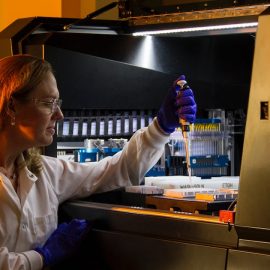

This article is an excerpt from the Shortform book guide to "Enlightenment Now" by Steven Pinker. Shortform has the world's best summaries and analyses of books you should be reading.
Like this article? Sign up for a free trial here.
What’s the state of the environment? What’s the outlook for the future?
Steven Pinker believes that the world is getting better. One of his measures of Enlightenment progress is the state of the environment. This assessment is perhaps the one that poses the greatest challenge and is the basis for the strongest pushback against his argument that things are getting better.
Keep reading to learn why Pinker is optimistic about the environment.
The State of the Environment
Pinker acknowledges that arguments about environmental destruction are among the most common criticisms he gets about his analysis of the state of the environment. It can be argued, for example, that the good of modernization does not outweigh the harm it does to the environment. So he asks whether progress and modernity are worth the environmental cost. He argues that they are—because, he says, environmental problems are solvable if we keep on the “enlightened” trajectory of applying reason and science to them. He calls this position “ecomodernism.”
An ecomodernist position, Pinker argues, begins with the acknowledgment that some amount of pollution is an inevitable result of the human lifestyle. Acknowledging that, we then have to weigh the positive effects industrialization has had on human lives against the negative effects it’s had on the natural world. (Shortform note: Industrial pollution has had a negative impact on human health as well as the environment. It has been linked to asthma, bronchitis, skin and eye diseases, and cancer, among other problems.) And he says modern gifts such as electricity, food surplus, advanced medicine, and freedom from servitude are certainly worth some degree of environmental pollution. Most importantly, he argues, this trade-off is worth it because it’s exactly those modern advancements that will solve the environmental crisis.
On the topic of “resources,” Pinker argues that it’s a fallacy to think we’ll eventually run out of the resources we need to sustain our lives because humans have always been able to switch to new resources before the previous ones ran out. For example, modern societies are switching to electric vehicles and moving away from gasoline long before petroleum runs out. (Shortform note: Others are less optimistic. A 2021 study predicted that, if economic growth and population growth continue at their current pace, the world’s natural resources will be depleted in 20 years.)
Here, Pinker revisits the topic of nuclear technology. He advocates developing nuclear technologies for sustainable energy while we continue to push for value and policy shifts that will discourage the use of this technology for weapons. And again, he says, we need to acknowledge the danger of the environmental crisis without panicking to the point of resignation.
The environmental issue illustrates Pinker’s overarching argument. He says that, when we are confronted with challenges, we have a tendency to overreact or withdraw and desire the past. For example, environmentalists might oppose the development of nuclear technology. Some, like neo-Luddites, even take hardline anti-technology stances, arguing for returning to a pre-modern way of living. But Pinker says this is exactly the wrong response. He says only reason, humanism, and continued scientific progress will adequately address climate change—along with all the other problems we face in the world today.
| Paths to a More Sustainable Future Environmentalists tend to take very different, even opposing, positions on how to best address the impending climate change crisis and create a more sustainable future for humanity. On one hand, the ecomodernist movement seeks to address the problem with technology by “decoupling” humans from nature. This path would entail most humans living in densely populated, highly modernized urban areas, relying on nuclear energy and intensive production of genetically-modified or synthetically created foods. Supporters of ecomodernism believe there’s no way for humanity to return to a symbiotic relationship with nature, so therefore removing ourselves from it, and letting nature “rewild” itself is the only way forward. On the other hand, back-to-the-land movements promote closer integration between humans and nature. Emerging in the 1960s and ’70s, this movement has seen a resurgence in recent years, especially among the Millennial generation. This path entails creating more sustainable and harmonious relationships with nature to minimize our impact. It promotes a return to rural living, which includes reducing reliance on technology and engaging in small-scale farming and self-sufficiency. |

———End of Preview———
Like what you just read? Read the rest of the world's best book summary and analysis of Steven Pinker's "Enlightenment Now" at Shortform.
Here's what you'll find in our full Enlightenment Now summary:
- How the world is actually getting better, not worse, over time
- Why people think the world is worse off than it is
- What Enlightenment values are and where they come from






